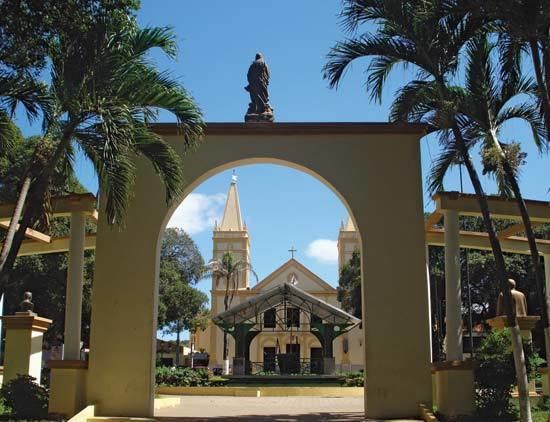Mesoregion Sul Cearense Area 1,009 km² Local time Tuesday 10:42 PM | State Ceará Time zone UTC -3 Population 93,469 (2010) | |
 | ||
Weather 24°C, Wind N at 0 km/h, 84% Humidity University Regional University of Cariri | ||
Crato is a city of 150,000 inhabitants on the banks of the river Granjeiro in the south of the state of Ceará, in the northeast of Brazil. It was founded on June 21, 1764 by the Capuchin friar Carlos Maria de Ferrara. Originally it was a small village in which the population were principally native Kariris, it gained official status as a city on October 17, 1817.
Map of Crato, Cear%C3%A1, Brazil
The Brazilian city of Crato was named in honor to Crato, a Portuguese town which was founded in the 13th century.
Crato is about 550 km from Fortaleza, the capital of the state of Ceará. Its county has a surface area of approximately 1,117 km². It is at an altitude of 426m, 07°14′03″S 39°24′34″W. Its population of 110,000 makes it the sixth largest city in Ceará. The economy is a mix of trading and agriculture; as of 2004, a small industrial park is expanding. The region is rich in minerals, especially gypsum and marble.
Crato has its Roman Catholic Diocese which has contributed for the educational system of the region with schools. The main campus of URCA (Universidade Regional do Cariri) is located here.
The city is surrounded by a tropical wood in the Araripe basin (Serra do Araripe) near the border of the state of Pernambuco. the climate is generally mild, with somewhat more rain than is typical of the region.
Crato is connected to the nearby city of Juazeiro do Norte by a commuter rail line called the Cariri Metro that opened in 2009–2010.
